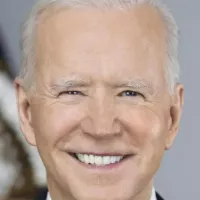Amtrak, officially the National Railroad Passenger Corporation, is the primary provider of intercity passenger rail service in the United States. Operating in 46 of the 48 contiguous states and three Canadian provinces, it plays a significant role in connecting various regions. The name Amtrak is a combination of the words "America" and "track."
1916: Railways as Primary Transportation
In 1916, 98% of all commercial intercity travelers in the United States moved by rail, and the remaining 2% moved by inland waterways. Nearly 42 million passengers used railways as primary transportation.
1940: Railroads held 67 percent of commercial passenger-miles in the United States
By 1940, railroads held 67 percent of commercial passenger-miles in the United States. In real terms, passenger-miles had fallen by 40% since 1916, from 42 billion to 25 billion.
1945: Railroad Market Share Surges to 74%
In 1945, aided by troop movement and gasoline rationing, the railroad's market share surged to 74%, with a massive 94 billion passenger-miles.
1950: Passenger Travel Percentages of the Overall Market Share Fell to 46%
By 1950, passenger travel percentages of the overall market share fell to 46%.
1957: Railroad passenger service deficits reached $723 million
By 1957 passenger travel percentages of the overall market share fell to 32%. Since the Great Depression, railroads had lost money on passenger service, but deficits reached $723 million in 1957.
1958: Passenger service route-miles fell from 107,000 miles
In 1958, passenger service route-miles fell from 107,000 miles (172,000 km).
1961: Doyle Report Proposed Railroads Pool Services
In 1961, The Doyle Report proposed that the private railroads pool their services into a single body.
1965: Similar proposals were made to pool services
In 1965, Similar proposals were made in 1965 and 1968 but failed to attract support. The federal government passed the High Speed Ground Transportation Act of 1965 to fund pilot programs in the Northeast Corridor, but this did nothing to address passenger deficits.
1967: Diversion of mail from passenger trains
In late 1967, the diversion of most United States Post Office Department mail from passenger trains to trucks, airplanes, and freight trains deprived those trains of badly needed revenue.
1968: Similar proposals were made to pool services
In 1965, Similar proposals were made in 1965 and 1968 but failed to attract support. The federal government passed the High Speed Ground Transportation Act of 1965 to fund pilot programs in the Northeast Corridor, but this did nothing to address passenger deficits.
1969: Proposals emerged in the United States Congress
In late 1969, multiple proposals emerged in the United States Congress, including equipment subsidies, route subsidies, and, lastly, a "quasi-public corporation" to take over the operation of intercity passenger trains.
June 21, 1970: Penn Central filed to discontinue 34 passenger trains
On June 21, 1970, the Penn Central, the largest railroad in the Northeastern United States and teetering on bankruptcy, filed to discontinue 34 of its passenger trains.
October 1970: Congress passed the Rail Passenger Service Act
In October 1970, Congress passed, and President Richard Nixon signed into law, the Rail Passenger Service Act. It created the National Railroad Passenger Corporation (NRPC), a quasi-public corporation that would be managed as a for-profit organization, but which would receive taxpayer funding and assume operation of intercity passenger trains.
1970: Rail Passenger Service Act of 1970
In 1970, the Rail Passenger Service Act, which established Amtrak, specified that the corporation would not be an agency of the U.S. Government.
1970: Passenger service route-miles fell to 49,000 miles
In 1970, the last full year of private operation, passenger service route-miles fell to 49,000 miles (79,000 km).
1970: Amtrak founding
In early 2007, Amtrak employed 20,000 people in 46 states and served 25 million passengers a year, the highest since its founding in 1970.
1970: Only six railroads declined to join the NRPC
Of the 26 railroads still offering intercity passenger service in 1970, only six declined to join the NRPC.
January 28, 1971: Final list of routes
On January 28, 1971, the final list of routes was presented, adding 5 additional routes to the November 30 draft.
May 1, 1971: Amtrak began operations
Amtrak began operations on May 1, 1971, receiving no rail tracks or rights-of-way at its inception. Amtrak continued only 184 of the 366 train routes that operated previously, pruning about half the passenger rail network.
1971: Amtrak commences operations
In 1971, Amtrak commenced operations with $40 million in direct federal aid, $100 million in federally insured loans, and a somewhat larger private contribution.
1971: Amtrak Leases Passenger Cars
In 1971, Amtrak leased around 1,200 of the best passenger cars from the 3,000 that the private railroads owned. Passenger cars and locomotives initially retained the paint schemes and logos of their former owners which resulted in Amtrak running trains with mismatched colors – the "Rainbow Era".
1971: Amtrak Founded
In 1971, Amtrak was founded as a quasi-public corporation to operate many U.S. passenger rail routes. Amtrak receives state and federal subsidies but is managed as a for-profit organization.
1971: Issuance of Common Stock in 1971
In 1971, common stock was issued to railroads that contributed capital and equipment.
1971: Formation of Amtrak
In 1971, the formation of Amtrak was criticized as a bailout that served corporate rail interests and union railroaders, not the traveling public.
March 1972: Alternate Routing Adopted
In March 1972, an alternate routing was adopted and the trains serving Central Station continued to use that station.
1972: Amtrak's ridership increased
In 1972, Amtrak's ridership increased from 16.6 million.
1972: First full year of operation
In 1972, its first full year of operation, Amtrak carried 15.8 million passengers.
1973: Increase to daily service
The creation of the Los Angeles–Seattle Coast Starlight from three formerly separate train routes was an immediate success, resulting in an increase to daily service by 1973.
1974: Fortune magazine exposed the manufactured mismanagement
After Fortune magazine exposed the manufactured mismanagement in 1974, Louis W. Menk, chairman of the Burlington Northern Railroad, remarked that the story was undermining the scheme to dismantle Amtrak.
1974: Expected break-even point
Officials expected that Amtrak would break even by 1974, but those expectations proved unrealistic.
1975: Official Amtrak color scheme
By 1975, the official Amtrak color scheme was painted on most Amtrak equipment and newly purchased locomotives and the rolling stock began appearing.
1975: Initial draft consisting of 27 routes was presented
In 1975, John A. Volpe believed his initial draft consisting of 27 routes would make a $24 million profit. The Office of Management and Budget, however, believed Volpe and the DOT's analysis was far too optimistic, with director George Shultz arguing to cut the number of routes by around half.
April 1, 1976: Amtrak Acquired the Majority of the NEC
On April 1, 1976, Amtrak acquired the majority of the Northeast Corridor (NEC). This mainline became Amtrak's "jewel" asset, and helped the railroad generate revenue.
February 1978: Amtrak moved its headquarters
In February 1978, Amtrak moved its headquarters to 400 North Capitol Street NW, Washington D.C.
1978: Amtrak Standard Stations Program was launched
In 1978, the Amtrak Standard Stations Program was launched and proposed to build a standardized station design across the system with an aim to reduce costs, speed construction, and improve its corporate image.
1981: Uncertain government aid
Amid uncertain government aid from 1981 to about 2000, Amtrak's ridership stagnated at roughly 20 million passengers per year.
1981: Amtrak's ridership increased
By 1981, Amtrak's ridership increased to 21 million.
1981: Annual federal aid reaches a 17-year high
In 1981, annual direct federal aid to Amtrak reached a 17-year high of $1.25 billion.
1982: William Graham Claytor Jr. leads Amtrak
In 1982, William Graham Claytor Jr., former Secretary of the Navy and retired Southern Railway head, became the head of Amtrak. Despite disagreements with the Reagan administration, he maintained positive relationships with key figures. Limited funding led to the use of short-term debt to fund operations in 1982.
1986: Federal support falls to a decade low
By 1986, federal support for Amtrak fell to a decade low of $601 million, almost none of which were capital appropriations.
1988: Lowest freight-rail traffic volumes since at least 1988
Amtrak's overall on-time performance improved in 2009, coinciding with the lowest freight-rail traffic volumes since at least 1988, meaning less freight traffic to impede passenger traffic.
1991: Empire Connection tunnel opened
In 1991, the Empire Connection tunnel opened, enabling Amtrak to consolidate all New York services at Penn Station.
1991: Empire Connection built in New York City
In 1991, the Empire Connection was built in New York City.
October 1992: X 2000 train tested
From October 1992 to January 1993, Amtrak tested an X 2000 train leased from Sweden on the Northeast Corridor.
January 1993: X 2000 train tested
From October 1992 to January 1993, Amtrak tested an X 2000 train leased from Sweden on the Northeast Corridor.
September 1993: X 2000 revenue service
In September 1993, the X 2000 train provided revenue service between Washington, D.C. and New York City.
1993: Thomas Downs becomes president
In 1993, Thomas Downs succeeded Claytor as Amtrak's fifth president, with the goal of "operational self-sufficiency".
1995: Amtrak faces cash crisis
By 1995, Amtrak was on the brink of a cash crisis and was unable to continue to service its debts.
1997: Congress authorizes funding for Amtrak
In 1997, Congress authorized $5.2 billion for Amtrak over the next five years, largely to complete the Acela capital project.
1997: Taxpayer Relief Act provides refund
In 1997, Congress included a provision in the Taxpayer Relief Act that resulted in Amtrak receiving a $2.3 billion tax refund, resolving their cash crisis.
1997: Congress releases Amtrak from labor contracting prohibition
In 1997, Congress released Amtrak from a prohibition on contracting for labor outside the corporation and its unions, opening the door to privatization.
1998: George Warrington becomes president
In 1998, George Warrington became the sixth president of Amtrak, tasked with making the company financially self-sufficient.
March 9, 1999: Amtrak unveils Acela Express plan
On March 9, 1999, Amtrak revealed its plan for the Acela Express, a high-speed train for the Northeast Corridor between Washington, D.C., and Boston.
1999: Most recent contract signed
The most recent contract, signed in 1999, was mainly retroactive.
2000: Uncertain government aid
Amid uncertain government aid from 1981 to about 2000, Amtrak's ridership stagnated at roughly 20 million passengers per year.
2000: Inauguration of the high-speed Acela
The inauguration of the high-speed Acela in late 2000 generated considerable publicity and led to major ridership gains.
2002: Buy-out Offer Declined
In 2002, holders of common stock declined a buy-out offer by Amtrak.
2002: David L. Gunn replaces Warrington
In early 2002, David L. Gunn replaced Warrington as the seventh president of Amtrak.
2003: Self-sufficiency ultimatum
Congress gave Amtrak the ultimatum of self-sufficiency by 2003 or liquidation, but Amtrak did not achieve self-sufficiency.
2004: Railway buckles cause delays
In 2004, 30,000 delay minutes were attributed to increased heat causing railway buckles, leading to a total of over 1.7 million U.S. dollars in heat-related delay costs.
2004: Service cutbacks due to funding stalemate
In 2004, a stalemate in federal support of Amtrak forced cutbacks in services and routes as well as the resumption of deferred maintenance.
2005: Amtrak carbon dioxide emissions
In 2005, Amtrak's carbon dioxide equivalent emissions per passenger were 0.411 lbs/mi (0.116 kg per km).
2005: Congress appropriates more funding than requested by President Bush
In fiscal 2004 and 2005, Congress appropriated about $1.2 billion for Amtrak, which was $300 million more than President George W. Bush had requested.
2005: Gunn fired amidst privatization plan
Late in 2005, Gunn was fired amidst disagreements over a Bush administration plan to privatize parts of Amtrak.
2006: Amtrak receives funding with conditions
In 2006, Amtrak received just under $1.4 billion, with the condition that Amtrak would reduce food and sleeper service losses.
2006: Amtrak sought congressional funding
In late 2006, Amtrak unsuccessfully sought annual congressional funding of $1 billion for ten years.
October 2007: Senate passes Passenger Rail Improvement and Investment Act
In October 2007, the Senate passed S. 294, the Passenger Rail Improvement and Investment Act of 2007 (70–22), sponsored by Senators Frank Lautenberg and Trent Lott.
2007: Funding needs confirmed by DOT Inspector General
In Congressional testimony, the DOT Inspector General confirmed that Amtrak would need at least $1.4 billion to $1.5 billion in fiscal 2006 and $2 billion in fiscal 2007 just to maintain the status quo.
2007: Amtrak employs 20,000 people
In early 2007, Amtrak employed 20,000 people in 46 states and served 25 million passengers a year, the highest since its founding in 1970.
May 2008: Record ridership due to gasoline prices
In May 2008, Amtrak saw record ridership due to rising gasoline prices. Regional lines experienced 12% year-over-year growth.
June 11, 2008: House passes passenger rail bill
On June 11, 2008, a passenger rail bill passed the House with a veto-proof margin (311–104).
October 16, 2008: President Bush signs rail bill into law
The Passenger Rail Investment and Improvement Act of 2008 was signed into law by President Bush on October 16, 2008. The bill appropriates $2.6 billion a year in Amtrak funding through 2013.
2008: Free Wi-Fi service on the Downeaster
Amtrak first offered free Wi-Fi service to passengers aboard the Downeaster in 2008.
2008: Railroads' dispatching practices were investigated
In 2008, the railroads' dispatching practices were investigated, resulting in stricter laws about train priority. The California Zephyr, with a 5% on-time record in 2008, went up to 78.3%.
2008: Joseph H. Boardman becomes president
In late 2008, Joseph H. Boardman replaced Kummant as president and CEO of Amtrak.
2008: State Supported Service
Since 2008, the State Supported service, which operates on corridor routes of less than 750 miles, has been funded entirely by state governments.
2009: Amtrak's overall on-time performance went up
Amtrak's overall on-time performance went up from 74.7% in fiscal 2008 to 84.7% in 2009, with long-distance trains and others outside the NEC seeing the greatest benefit.
2009: Amtrak fragmentation of railroad unions
As of 2009, Amtrak had 14 separate unions to negotiate with, including 24 separate contracts between them.
2010: Amtrak track repair backlog
Amtrak stated in 2010 that the backlog of needed repairs of the track it owns on the Northeast Corridor included over 200 bridges, most dating to the 19th century, tunnels under Baltimore dating to the American Civil War era and functionally obsolete track switches which would cost $5.2 billion to repair.
2010: Wi-Fi on Acela and Northeast Regional trains
In 2010, Amtrak offered free Wi-Fi service to passengers aboard the Acela and Northeast Regional trains on the NEC.
2010: Farebox recovery rate
In 2010, Amtrak's farebox recovery (percentage of operating costs covered by revenues generated by passenger fares) was 79%, the highest reported for any U.S. passenger railroad.
2010: Senate approves Amtrak funding bill
In 2010, the Senate approved a bill to provide $1.96 billion to Amtrak, but cut the approval for high-speed rail to a $1 billion appropriation.
2010: Wicker Amendment allows firearms in checked baggage
With the passage of the Wicker Amendment in 2010, passengers are allowed to put lawfully owned, unloaded firearms in checked Amtrak baggage, reversing a decade-long ban on such carriage.
May 7, 2011: Amtrak 40th Anniversary Festivities
On May 7, 2011, Amtrak celebrated its 40th anniversary on National Train Day.
May 2011: Amtrak 40th Anniversary Festivities
From May 2011 to May 2012, Amtrak celebrated its 40th anniversary with festivities across the country. A commemorative book was published, a documentary was created, six locomotives were painted, and an Exhibit Train toured the country.
November 2011: E-ticketing system launched on the Downeaster
Amtrak launched an e-ticketing system on the Downeaster in November 2011.
2011: Amtrak announces Gateway Program
In 2011, Amtrak announced its intention to improve and expand the high-speed rail corridor with the Gateway Program, estimated to cost $13.5 billion.
2011: Wi-Fi on Amtrak Cascades
In 2011, Amtrak offered free Wi-Fi service to passengers aboard the Amtrak Cascades.
2011: U.S. Congress grants funding
In Fiscal Year 2011, the U.S. Congress granted Amtrak $563 million for operating and $922 million for capital programs.
May 2012: Amtrak 40th Anniversary Festivities
From May 2011 to May 2012, Amtrak celebrated its 40th anniversary with festivities across the country. A commemorative book was published, a documentary was created, six locomotives were painted, and an Exhibit Train toured the country.
July 30, 2012: Nationwide e-ticketing system rollout
On July 30, 2012, Amtrak rolled out its e-ticketing system nationwide.
December 2013: Boardman named Railroader of the Year
In December 2013, Boardman was named "Railroader of the Year" by Railway Age magazine, becoming the second-longest serving head of Amtrak.
2013: Funding cut in 2013
In 2013, Amtrak had to deal with a year-over-year cut in federal appropriations, dropping to under $1.4 billion for the first time in several years.
2013: Funding through Passenger Rail Investment and Improvement Act of 2008 ends
In 2013, the Passenger Rail Investment and Improvement Act of 2008 appropriations of $2.6 billion a year in Amtrak funding ends.
February 2014: Wi-Fi on corridor trains out of Chicago
In February 2014, Amtrak rolled out Wi-Fi on corridor trains out of Chicago.
February 2015: Stock Ownership
As of February 2015, there were 9.4 million shares of common stock, with a par value of $10 per share, held by American Premier Underwriters (53%), BNSF (35%), Canadian Pacific (7%) and Canadian National (5%).
December 9, 2015: Boardman to leave Amtrak
On December 9, 2015, Boardman announced that he would be leaving Amtrak in September 2016.
August 19, 2016: Moorman named Boardman's successor
On August 19, 2016, Charles "Wick" Moorman was named Boardman's successor, effective September 1, 2016.
September 1, 2016: Moorman becomes president
On September 1, 2016, Charles "Wick" Moorman became president of Amtrak.
September 2016: Boardman to leave Amtrak
On December 9, 2015, Boardman announced that he would be leaving Amtrak in September 2016.
November 17, 2016: Gateway Program Development Corporation formed
On November 17, 2016, the Gateway Program Development Corporation (GDC) was formed to oversee rail infrastructure improvements, including the Hudson Tunnel Project and the Portal North Bridge.
June 2017: Richard Anderson next President & CEO
In June 2017, it was announced that Richard Anderson would become Amtrak's next President & CEO, starting on July 12.
2017: Amtrak absorbs Chicago Union Station Company
In 2017, Amtrak absorbed the Chicago Union Station Company, which was formerly a wholly owned subsidiary.
2017: Washington state train crash settlement and policy change
In 2017, after settling for $17 million in the Washington state train crash, Amtrak adopted a new policy requiring arbitration to prevent further lawsuits.
March 2018: Amtrak issues first report card
In March 2018, Amtrak issued its first report card, grading each host railroad based on their impact on on-time performance. The report card included one A grade, which was given to Canadian Pacific, and two F grades, given to Canadian National and Norfolk Southern.
2018: Farebox recovery rate increase
In 2018, Amtrak's farebox recovery rate increased to 94.9%.
2018: Amtrak's On-Time Performance
In 2018, Amtrak's median on-time performance between 2018 and 2023 was 74.5%.
2019: Record ridership in fiscal year 2019
Amtrak carried a record 32 million passengers in fiscal year 2019, which is more than double the total in 1972.
April 15, 2020: William Flynn named Amtrak President and CEO
On April 15, 2020, William Flynn was named Amtrak President and CEO.
September 30, 2020: Amtrak ridership declines due to COVID-19 effects
For the fiscal year ending on September 30, 2020, Amtrak reported 16.8 million passengers, reflecting a decline in ridership due to the effects of the COVID-19 pandemic.
October 2020: Long-distance routes reduced due to COVID-19
During the COVID-19 pandemic, most long-distance Amtrak routes were reduced to three weekly round trips in October 2020.
December 2020: Anderson remained with Amtrak as a senior advisor
Richard Anderson remained with Amtrak as a senior advisor until December 2020.
2020: Amtrak's host report card
Amtrak's 2020 host report card gave Canadian Pacific and Canadian National an A, BNSF and CSX a B, Union Pacific a C+, and Norfolk Southern a D−.
2020: Amtrak Planning for expansion
As Amtrak approached profitability in 2020, the company undertook planning to expand and create new intermediate-distance corridors across the country.
2020: Peak on-time performance
In 2020, Amtrak's median on-time performance between 2018 and 2023 reached a high of 80%.
March 2021: Amtrak Connects US proposal
In March 2021, Amtrak CEO Bill Flynn outlined a proposal called Amtrak Connects US that would expand state-supported intercity corridors with an infusion of upfront capital assistance.
May 2021: Long-distance routes restored to daily schedules
In late-May 2021, most of Amtrak's long-distance routes were restored to daily schedules.
September 2021: Hurricane Ida Floods Northeast Corridor
In September 2021, the remnants of Hurricane Ida flooded the Amtrak Northeast Corridor running from Boston to Washington D.C. and caused it to shut down for an entire day.
2021: Infrastructure Investment and Jobs Act
In 2021, the Infrastructure Investment and Jobs Act was passed and signed into law, directly appropriating $66 billion for rail over a five-year period, with at least $18 billion designated for expanding passenger rail service to new corridors. Amtrak received $22 billion in advance appropriations and $19 billion in fully authorized funds.
2021: Ridership decrease in FY 2021
In FY 2021, Amtrak reported a further decrease in ridership, with 12.2 million passengers reported.
2021: NEC services accounted for 4.4 million of Amtrak's 12.2 million passengers
In fiscal year 2021, the NEC services accounted for 4.4 million of Amtrak's 12.2 million passengers.
January 2022: Stephen Gardner becomes CEO
Stephen Gardner, a former Amtrak intern and longtime executive, became the company's CEO in January 2022.
March 2022: Routes modified or suspended again
From January to March 2022, a resurgence of the virus caused by the Omicron variant caused Amtrak to modify and/or suspend many long-distance routes again.
2022: Ridership increase in FY 2022
FY 2022 saw an increase to 22.9 million passengers.
February 2023: Snowfall and Debris cause disruptions
In February 2023, heavy snowfall and debris on tracks caused major disruptions from delays to cancellations.
2023: Amtrak's 2023 host report card
Amtrak's 2023 host report card gave Canadian Pacific Kansas City an A, CSX and Canadian National a B+, BNSF a B, Norfolk Southern a B-, and Union Pacific a C-.
2023: Amtrak's On-Time Performance
Amtrak's median on-time performance between 2018 and 2023 was 74.5%.
2023: Average Amtrak employee salary
As of 2023, the average Amtrak employee annual salary was $121,000 per year.
2023: Ridership increase in FY 2023
In FY 2023, Amtrak's ridership increased to 28.6 million passengers.
2024: Gateway Program cost
In 2011, Amtrak announced its intention to improve and expand the high-speed rail corridor with the Gateway Program, initially estimated to cost $13.5 billion (equal to $19 billion in 2024).
2024: Record ridership in FY 2024
In FY 2024, Amtrak's ridership increased to 32.8 million passengers, an all time record.
2024: Fiscal Year 2024
In fiscal year 2024, Amtrak served 32.4 million passengers and had $2.5 billion in revenue. As of fiscal year 2024, there are more than 22,100 employees. Nearly 87,000 passengers ride more than 300 Amtrak trains daily.
March 19, 2025: Stephen Gardner resigned
Stephen Gardner resigned on March 19, 2025 amid reports that the Trump administration had pressured him to step down.
March 19, 2025: Current Board Members
As of March 19, 2025, the text refers to current board members.
Mentioned in this timeline
The United States of America is a federal republic located...
California is the most populous US state located on the...

George W Bush served as the rd President of the...

Washington D C the capital of the United States is...
World War II - was a global conflict between the...

Joseph Robinette Biden Jr served as the th U S...
Trending

3 days ago Kid Rock Opens Nashville Seafood Restaurant, Receives Congratulations from Trump Who Calls Him 'badass'.

3 days ago Iga Swiatek reaches Roland Garros 2025 quarterfinal after dramatic match with Switolina.

3 days ago Chelsea declines Jadon Sancho deal, opts to return him to Man Utd.

3 days ago Maignan's Renewal: Allegri's Request, Chelsea's Interest, and Milan's Negotiation Updates

3 days ago Aryna Sabalenka seeks French Open revenge against Zheng Qinwen in quarter-finals.
3 days ago Ukraine's Drone Attacks Inside Russia Impact Military Strategy, Targeting Warplanes and Key Assets.
Popular

Cristiano Ronaldo often called CR is a Portuguese professional footballer...

Donald John Trump is an American politician media personality and...

Michael Jordan also known as MJ is an American businessman...

LeBron James nicknamed King James is a professional basketball player...

Elon Musk is a prominent businessman best known for leading...

Lionel Messi is an Argentine professional footballer widely considered one...